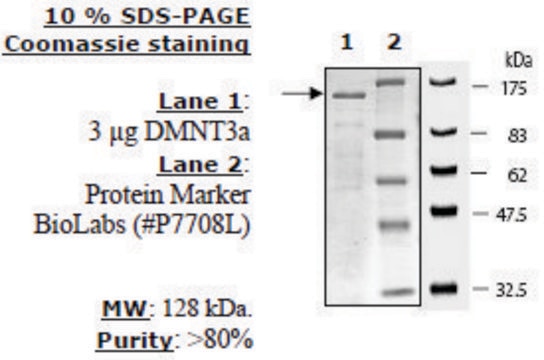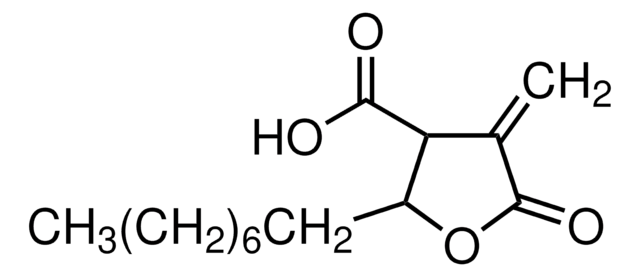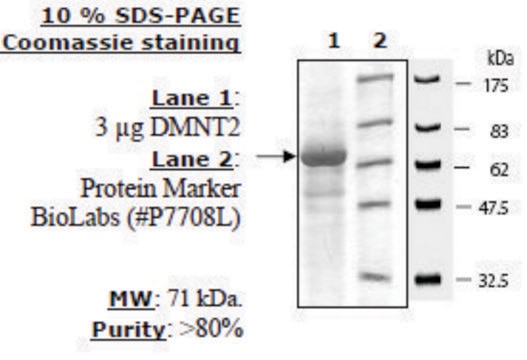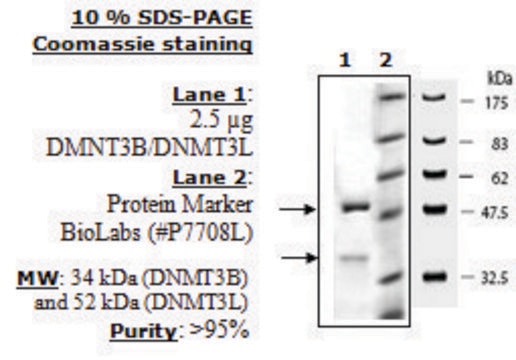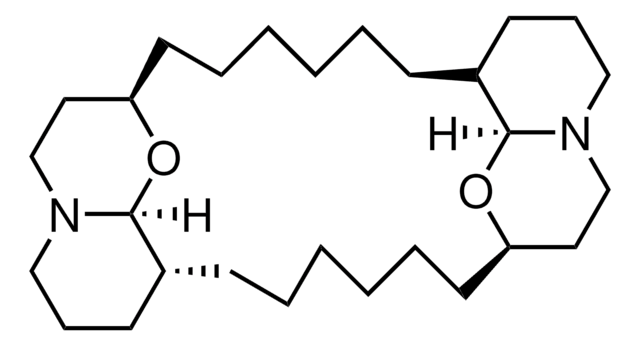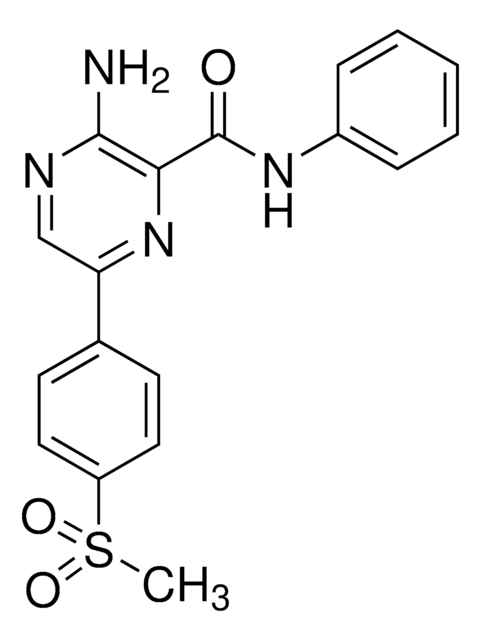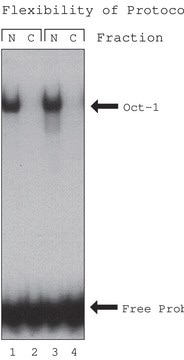SRP0126
DNMT1 Active human
recombinant, expressed in baculovirus infected insect cells, ≥50% (SDS-PAGE)
Synonym(s):
CXXC-type zinc finger protein 9, DNA (cytosine-5-)-methyltransferase 1, DNA MTase HsaI, MCMT
About This Item
Recommended Products
biological source
human
recombinant
expressed in baculovirus infected insect cells
tag
GST tagged (N-terminal)
assay
≥50% (SDS-PAGE)
form
aqueous solution
potency
≥50
mol wt
211 kDa
packaging
pkg of 10 μg
manufacturer/tradename
Sigma-Aldrich
storage condition
avoid repeated freeze/thaw cycles
concentration
0.12 mg/mL
technique(s)
inhibition assay: suitable
NCBI accession no.
UniProt accession no.
application(s)
life science and biopharma
shipped in
dry ice
storage temp.
−70°C
Gene Information
human ... DNMT1(1786)
General description
DNMT1 (DNA methyltransferase 1) is a member of the DNMT enzyme family which also includes DNMT2, DNMT3A, and DNMT3B. It is a multidomain protein composed of 1616 amino acids. It has a methyltransferase domain in its C-terminal, which shows sequence homology to bacterial methyltransferases. The DNMT1 gene is mapped to human chromosome 19p13.2.
Application
Biochem/physiol Actions
Unit Definition
Physical form
Preparation Note
wgk_germany
WGK 3
flash_point_f
Not applicable
flash_point_c
Not applicable
Certificates of Analysis (COA)
Search for Certificates of Analysis (COA) by entering the products Lot/Batch Number. Lot and Batch Numbers can be found on a product’s label following the words ‘Lot’ or ‘Batch’.
Already Own This Product?
Find documentation for the products that you have recently purchased in the Document Library.
Our team of scientists has experience in all areas of research including Life Science, Material Science, Chemical Synthesis, Chromatography, Analytical and many others.
Contact Technical Service